- Article
provokes thought by telling why caste census is complex, how India shall be
divided based on Spanish word caste, Names of OBC and ST Kings, Myth of education being denied to Sudras! Word ‘backward’ is not defined! Is Backwardness a
function of caste and can it be reduced only by getting government
jobs? I belong to all varnas.
Eventually
the BJP led government announced a Caste Census, last done in 1931, the first
census being in 1881.
Dr
N Padmanabhan wrote in Caste and Social
Stratification of Medieval India (Calicut University), “The word ‘caste’ owes its origin to the Spanish word ‘casta’ which means ‘breed, race, strain or a complex of hereditary qualities’. The Portuguese applied this term to the classes of people in India known by the name of ‘jati’. The English word ‘caste’ is an adjustment of the original term.”
Caste
fails
to capture the meaning of the Indian term, jati, which is more properly translated as “community.” Jati in
traditional India promoted and preserved diversity and multiculturalism by
allotting every jati a particular space and role in society so that no jati
would be appropriated or dominated by another.
We need to understand that Indian sociology is rooted in the works
of Andre Betielle who was influenced by non-Indic methodologies. Irawati Karve
on the other hand was profoundly influenced by our Itihasa and thus her
understanding of caste as jati relevant to us today.
The
caste census aims to know number of Other Backward Castes (OBC), Scheduled Caste
(SC), Scheduled Tribes (ST). This is the time to ask questions and reflect. For
easy reading presented insights by number.
1. The word SC was introduced by the Government of India Act 1935. Gandhi called them ‘Harijan’. Ambedkar said he belonged to the Depressed Classes. The word ‘Dalit’ is neither defined nor found in the colonial Constitution (CC).
2. The word ST was
introduced around 1950 in the CC.
3. Kanshi Ram, BSP
leader was a Ramdasia Sikh, who belonged to the chamar/cobbler community. Sant Ravidas, Guru of Rajput
Queen Mirabai, belonged to the same community.
4. How did Dr Ambedkar get his surname? (Surname is a
British introduction)
Dhanjay Keer wrote in Dr Ambedkar: Life and Mission, “The original surname of Bhim’s father was Sakpal, a family name. Bhim drew his surname Ambavadekar from his native village Ambavade as Maharashtrian surnames are often derived from the names of ancestral villages. A Brahmin teacher in the High School, whose surname was Ambedkar, took such a liking to Bhim that he changed his surname to his own Ambedkar, in the schools records.” Pg.14
If the backwards were so badly treated would a Brahmin teacher
be teaching in a school that had untouchables and give his surname to a
untouchable!
Col Anil Athale
wrote
in The Legacy of Shivaji the Great
that the MAHARS, regarded as untouchables, played role of village guards and so
found easy acceptance in Shivaji army. They manned the intelligence gathering
and communication and were called HARKARAY.
5. OBC Kings
One
comes across many OBC kings like Mihir Bhoja, Ahilyabai Holkar, Rajendra Chola
(1012 to 1044), Baskara Sethupathi, King of Ramnad who sponsored Swami Vivekananda, King Sundara
Pandya who gold plated the Tirupati temple, Wodeyars of Mysuru, Raja Suheldev. Read OBC
Kings of India
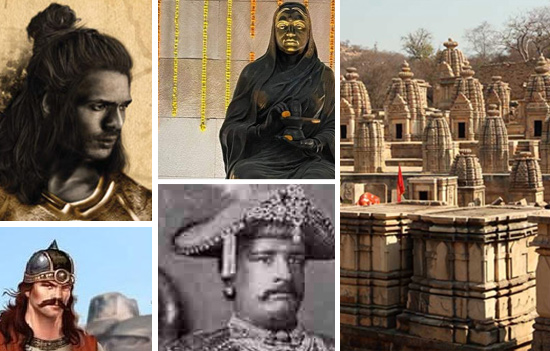 Collage of OBC Rulers.
Collage of OBC Rulers.
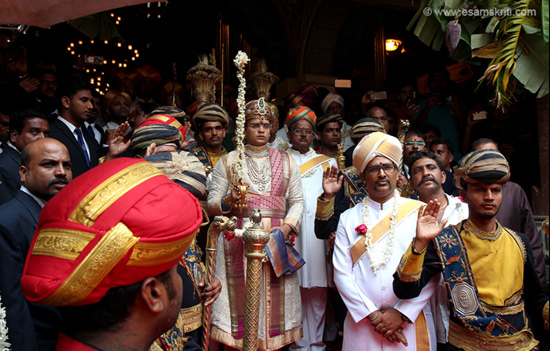 Wodeyar Ruler Mysuru are OBC. 2017.
Wodeyar Ruler Mysuru are OBC. 2017. Gurjars considered OBC
today. The key Gurjar-Pratihara kings were Nagabhata I (730-756), Vatsaraja,
Nagabhata II, Mihir Bhoja, Mahendrapala. Read About
Gurjara-Pratihara Empire
Did such distinguished warriors and
temple builders suffer at the hands of the so called Upper Castes that they are
considered Backward today!
6. Scheduled Tribe Kings
To name a few Yashwantrao Martandrao Mukne of Jawhar
Dahanu, near Mumbai, Royal Family of Tripura, Gond Rulers of Mandla etc. Read Gond
Palace Mandla
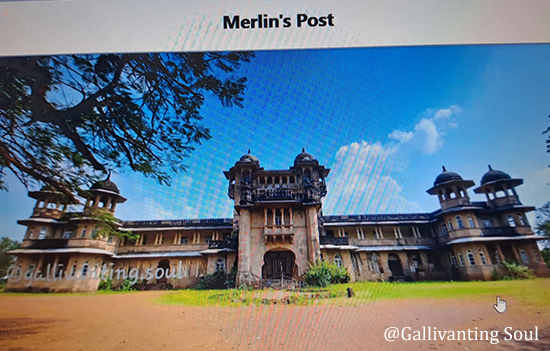 Jai Vilas Palace near Mumbai. Credits ‘Gallivanting Soul’.
Jai Vilas Palace near Mumbai. Credits ‘Gallivanting Soul’. 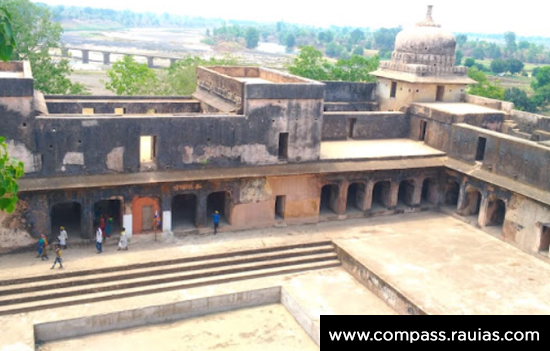 Ram Nagar Fort, Mandla near Jabalpur is on banks of Holy Narmada.
Ram Nagar Fort, Mandla near Jabalpur is on banks of Holy Narmada.
Ace Music Director R D Burman belonged to the Royal
Family of Tripura who are ST today.
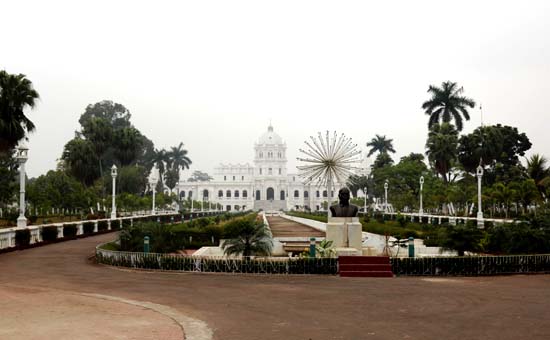 Bust of
Ambedkar at entrance of Ujjayanta Palace, Agartala.
Bust of
Ambedkar at entrance of Ujjayanta Palace, Agartala.
Husband of actress Moon Moon Sen the late
Bharat Dev Varma belonged to the Tripura Royal Family. So by rules of
patriarchy daughter Raima Sen must be ST.
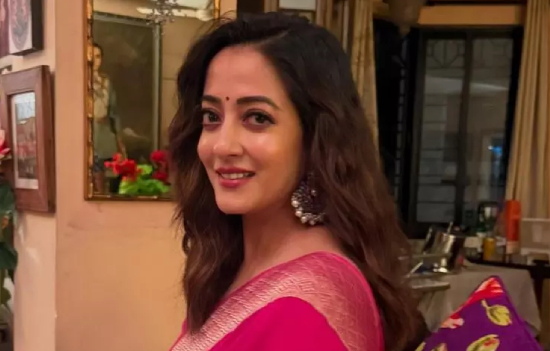 Actress Raima Sen must be considered ST too.
Actress Raima Sen must be considered ST too.
Meenas of Rajasthan were rulers before the
Kachhwaha Rajputs, the last rulers of Jaipur but are now ST.
7. In North-east all ST’s though converted to Christianity are considered ST for government purposes. In fact, one of the demands
during the 2024 protests by ST converts was that Meitis should not be
considered STs.
Important because one of the benefits that ST in the northeast get is that they do not have to pay Income-Tax.
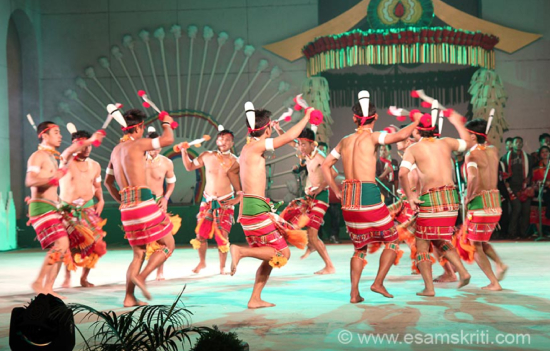 Kabui tribe of Manipur. Sangai Festival 2014.
Kabui tribe of Manipur. Sangai Festival 2014.
How will ST converts to Christianity be
classified in caste census?
8. Across
India ST who convert to Islam are still considered
ST for purposes of reservations for e.g. in medical colleges say late Dr
Payal Tadvi of Mumbai
How will ST converts to Islam be
considered? as ST or Muslim
9. In India it is assumed that only SC, ST and OBC are backward thus the Government of India has for atleast 75 years provided
financial and reservation benefits!
Article 15
(4) and 16 (4) of the CC authorizes the government to make reservations in educational
institutions for making any special provision for the advancement of any socially
and educationally backward classes of citizens.
It appears that the "backward" status they are struggling against is some ancient phenomenon.
In reality, however, their cultural and
economic backwardness (as distinct from their ritualistic status on specific
occasions) arose post 1800. What backward caste movements are attempting to
achieve is a reversal of the effects of the British policy, and restoration of
the position, status, and rights of these peoples to those that existed prior
to 1800.
10. What
is the definition of Backward Classes?
Section 2 of the 1993 National Commission for Backward Classes Act defines “backward classes” as backward classes of citizens other than the Scheduled Castes and the Scheduled Tribes as may be specified by the Central Government in the lists.” Today it includes Muslim and Christian groups too, where caste is supposed to be non-existent. To know
state wise categorization of OBCs
What is
BACKWARD is not
defined though?
11. Even though Islam does not believe in castes, divisions exist.
Will Muslims be classified according to Ashraf (who trace their origin either to western or central Asia (for
instance Syed, Sheikh, Mughal, Pathan, etc or native upper caste converts like
Rangad or Muslim Rajput, Taga or Tyagi Muslims, Garhe or Gaur Muslims, etc), Ajlaf
(lower caste or backwards), Arzal (Dalit). Source ThePrint
OR
will be classified as they were in the 2023 Bihar Caste Census Survey which
classifies Muslims by Hindu caste, not religion. Table 1
Table 1 Caste Survey with
and without Muslim Caste
|
Caste Category
|
Including
Muslim
|
Excluding
Muslim
|
|
EBC
|
36
|
32.5
|
|
BC
|
27.1
|
25.2
|
|
SC
|
19.7
|
19.7
|
|
Upper Caste so called
|
15.5
|
10.7
|
|
ST
|
1.7
|
1.7
|
When caste does not exist in Islam why were Muslims included in caste survey?
There
could be possibly two reasons. One, is to provide reservation to Muslims under
the guise of their being EBC or OBC. Two, is to understate the Muslim
population in the state. As per the survey it stands at
17.7%.
Thus, EBC/BC are 57.9% of Bihar’s population and not 63.1% as is commonly spoken off.
“The Congress government in Telangana conducted a caste survey ending in late 2024. It found BCs constitute 56.33% (including 10.08% BC Muslims), SCs 17.43%, STs 10.45%, and Other Castes 15.79% (including 2.48% OC Muslims) of the enumerated ~3.54 crore population.” Source The Wire
Like Bihar, Telangana has classified Muslims by caste not religion.
Did the 1931 Census or the 1990 Mandal Commission show Muslims by religion or Hindu castes?
Many states provide reservations to OBC Muslims, Gujarat and West Bengal included. Though not 100% sure, it must be under the OBC category – not sure if the British and Mandal Commission had thought it would work this way! Different states
have classified OBC differently?
Considering
that there are different OBC lists for Centre and States how will the Census
pan out?
12. Even
though Christianity does not believe in the concept of caste, divisions exist based on what they were prior to conversion.
I know of Christian Brahmins who shall marry only
Brahmin converts. Since converts loose state benefits on conversion, some want
to be considered Christian and SC. Recently, “The Andhra Pradesh High Court has ruled that
Scheduled Caste (SC) status and its legal protections under the SC/ST
(Prevention of Atrocities) Act do not apply to individuals who convert to other
religions, such as Christianity.”
So how will the caste census classify
Christians?
Would it be
based on who they were prior to conversion? To avail of SC/ST/OBC reservations
they might choose to be declared as such even though they have converted?
At Sanganer near Jaipur, in 2006, I met carpenter
Sharma, who is a Jehangid Brahmin. In states like Uttar Pradesh carpenters
belong to the Vishwakarma community.
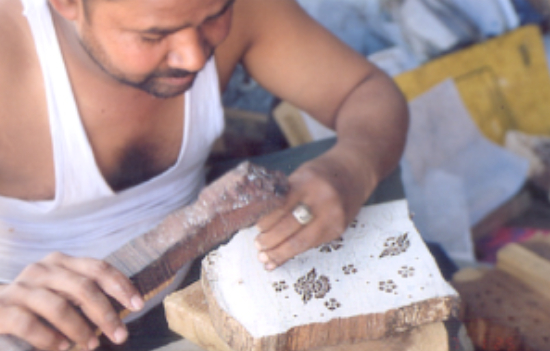 Carpenter near Jaipur who is a Jehangid Brahmin. 2006.
Carpenter near Jaipur who is a Jehangid Brahmin. 2006.
How will the
caste census show him, as Brahmin or Vishwakarma?
13. In Rajasthan, Jats are generally considered OBC whilst in Punjab the Chief Minister has always been a Jaat since the state was formed in 1966. How will the Census handle these contractions?
The
Jats of Bharatpur and Dholpur have again initiated an
agitation demanding reservation for Other Backward Classes (OBCs) at the Central
level. It implies there are OBC lists at state and central levels. No wonder
this reservation business is so complicated.
14. In Kutch met Shamji Bhai
Vankar He is the most successful businessman in Bhujodi for Kutchi handlooms. Shop attracts corporate and individual buyers from across the world. He belongs to the Meghal community, declared as SC by the colonial constitution.
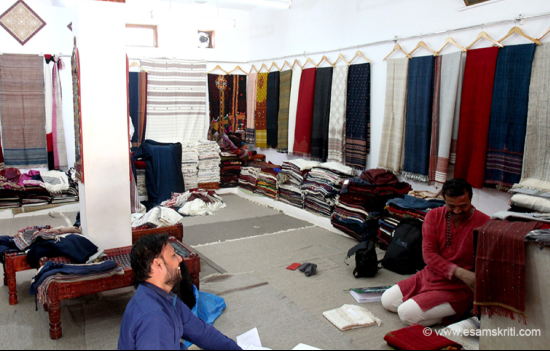 Shami Bhai Vankar is SC. 2018.
Shami Bhai Vankar is SC. 2018.
How will the
caste census show him, as SC or Vaishya community (upper caste)?
Ditto
for this enterprising lady in village Darkot, Munisyari, Kumaon, Uttarakhand.
Entire village makes woollens. To see
album
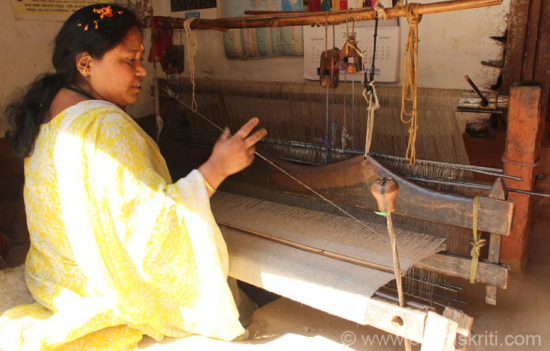 Lady weaves and sells shawls.
Lady weaves and sells shawls.
A
Das wrote about difficulties
encountered in the 1931 Census, “So, in 1931, occupation rather than varna was used to classify castes. But this model had its own pitfalls. For one, it was unable to reconcile the variations in an occupational group’s social standing across regions–for instance, Hutton noted that “cultivation in northern India is a most respectable occupation, whereas in certain parts of southern India it is largely associated with the ‘exterior’ castes’”. Indian Express Just
like the degree of untouchability around 1919 existed more in South than North
India. 15
15. Myth of education being denied to Sudras. Maximum
number of students in Madras Presidency were SUDRAS. (see point 16 below)
Dharampalji went through British and
Indian archives to reproduce reports, of surveys undertaken by the British in
Bengal, Punjab and Madras Presidency (1800-1830), in his book The
Beautiful Tree: Indigenous Indian Education in the 18th century
According to the collectors’ reports reviewed by Governor Sir Thomas Munro on 10 March 1826, of the 30,211 male school students in Madras Presidency, 20 percent were Brahmins and Chettris, 9 percent were Vaishyas, 50 percent were Shudras, and 6 percent were Muslims. Others constituted 15 percent. Read
excerpts
16. Views on Caste
“The British produced conditions that made caste the central symbol of Indian society.” Pg 19 Castes of Mind
Nicholas Dirks
Remember
that Jogendra Nath
Mandal,
a Dalit politician, was the first Law and Labour Minister of Pakistan after its
independence. It was religion not caste that forced him to return to India
in 1950.
17. History of Backward Class Commission
Group Editorial Director, India Today
Group Raj
Chengappa wrote, “The government refused to accept the recommendations of the First Backward Class Commission with Nehru coming out strongly against any move to divide the nation on the basis of caste. The Second Backward Class Commission formed in 1979 and headed by BP Mandal was again hampered by a lack of figures. The Mandal Commission bolstered its deductions with extensive field surveys apart from getting the census department to make extrapolations based on the 1931 census. It recommended a reservation of 27% for OBCs to all government services as well as technical/professional institutions both at the Centre and state levels. It was former Prime Minister VP Singh, who during his tenure in 1990, announced that the government would implement the Mandal Commission recommendations in toto.” Read
Caste Census History – Business Standard and Hindustan
Times
18.
Impact of Reservations by Caste
One e.g. Dhaval Kulkarni wrote in India Today, “Writer and activist Sanjay Sonwani notes that during caste censuses in British India, many castes claimed to belong to a more elite social group for upward mobility. For instance, the Kolis in Ahmednagar district claimed to be Kunbis. Similarly, the Dhangars in Baramati and Malegaon in Pune claimed to be Sagar Rajputs.” “They had sought the status of a more privileged caste for social upliftment,” explains Sonwani. “Now, a reverse process is under way where the rush is to belong to a caste lower down in the social order for quota benefits.” For e.g. Dhangars, described as a nomadic tribe by the British now OBC are agitating to be declared SC.
Caste
census is a ticket to Reservations in government jobs that provide lifelong job
and financial security.
Conclusion
Post the census there could be a clamour for distribution of
political, economic, and social benefits to castes based on their population.
What happens if a group of Indians argue that benefits should be distributed based on contribution to income-tax or India’s GDP?
India
should be prepared for more conflicts when the caste census numbers are out and
job/education reservations made based on those numbers.
Big beneficiary of caste census would be USA.
Also read
1.
Why Hindus should
stop being defensive about caste?
2.
A look at the
complicated history of caste surveys
3.
Who are Scheduled
Tribes?
4.
Were Backward
Classes always suppressed in India?
5.
History of word
Dalit
6.
Legislative and
judicial contours of SC/ST quota
7. The Truth
behind caste
8. OBC categories and
sub-categories
9. To
download Caste of Mind by Nicolas D
10. Caste Census History – Business Standard and Hindustan
Times
11. How caste census will work – questions answered
12.
Why is caste census required – Times of India
13.
A look at the findings of the 1931 Census Report – Indian Express
14.
How
States differ in enumerating castes
15.
In 1919, the Southborough
Franchise Committee adopted the test of untouchability to define the depressed
class. However, over 100 years ago the degree of untouchability
practiced varied across India. The 2024
Apex Court order on sub-classification of SC says it was more prevalent in
south India.
16. eSamkriti author says Dr Subhasis Chattopadhyay says, “In the Purusha Suktam we indeed find a demeaning reference to the 'Shudra' as being just one's legs. Now this invalidates the Hymn to the extent that Aristotle is invalidated by his unfortunate statement that women and pigs are the same. These are interpolations and historically contingent. Nothing should be read ahistprically. Our Shastras speak of Sudras as a fluid concept. It is another thing that systemic evil has ossified these distinctions. Therefore, we accept the internal contradictions in our Shastras as much as Biblical scholars accept that the concept of religion is all about process --- ours is indeed a process theology shaped by historical forces.”
17. Caste Census will further divide by Dipankar Gupta